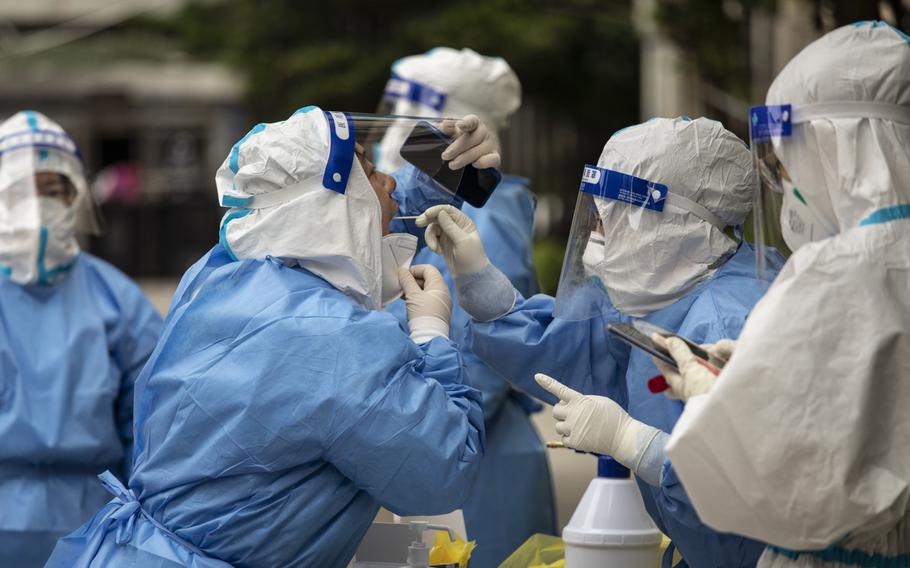The origins of COVID-19 can't be conclusively tied to the market in Wuhan where some of the first known cases appeared, according to Chinese researchers, further extending controversy around data collected at the start of the pandemic that had long remained out of view.
Findings from the samples taken more than three years ago have generated debate that intensified last month after the Chinese researchers briefly posted the data in an open-access genomics database. An outside group of academics who ran their own analysis concluded it was the strongest data yet backing the theory that the virus spilled over from animals to humans at the market. In a report published in the journal Nature, the Chinese researchers disagreed.
"The evidence provided in this study is not sufficient to support such a hypothesis," according to the authors led by George Gao of the National Institute for Viral Disease Control and Prevention at the Chinese Center for Disease Control and Prevention in Beijing. While the study confirmed the existence of raccoon dogs and other animals susceptible to the virus at the market, the samples "cannot prove that the animals were infected. Furthermore, even if the animals were infected, our study does not rule out that human-to-animal transmission occurred."
COVID’s origins have become an international, political and scientific lightning rod, as U.S. Republican lawmakers and others have charged that the globally disruptive virus leaked from a laboratory in China. The country’s officials, meanwhile, have suggested that the virus originated elsewhere, and have indicated that it may have been introduced into China via imported food.
It's possible that humans may have introduced the virus to the market, or it could have been brought in on refrigerated or frozen products, the Chinese researchers said. They called for enhanced surveillance of wild animals that could serve as natural or intermediate hosts for the virus.
"The origin of the virus cannot be determined from all the analyses available so far," they said. "More work, involving internationally coordinated efforts, is needed to investigate the potential origins of SARS-CoV-2."
Gao and his colleagues collected 1,380 samples from market between January and March 2020, and analyzed them for evidence of the novel coronavirus virus, according to the report. The virus was found in 73 of the nearly 1,000 environmental samples, most taken from the southwest corner of the market where suspected illegal sales of wildlife occurred, according to the report. While there was evidence that animals including raccoon dogs that could be potential host species were also present at the market, most of it was found in samples that were negative for the virus, the researchers said.
The report underwent a scientific review, but wasn't edited before an accelerated publication, the journal said, indicating that the version may be updated at some point.

A team of health workers and volunteers in personal protective equipment (PPE) test each other before testing residents at a neighborhood where a suspected flare-up in COVID-19 cases occurred in Shanghai on May 9, 2022. (Qilai Shen/Bloomberg)